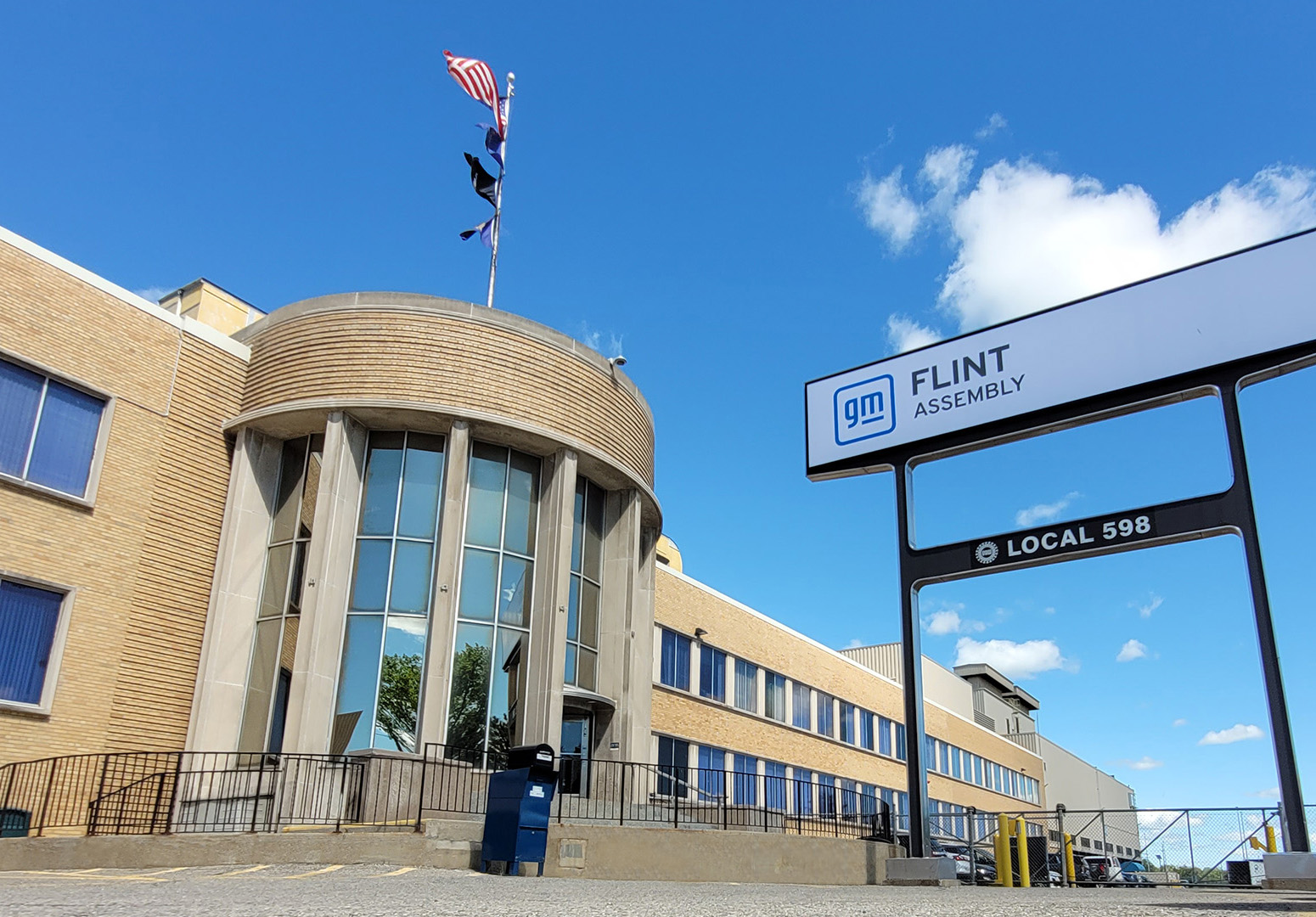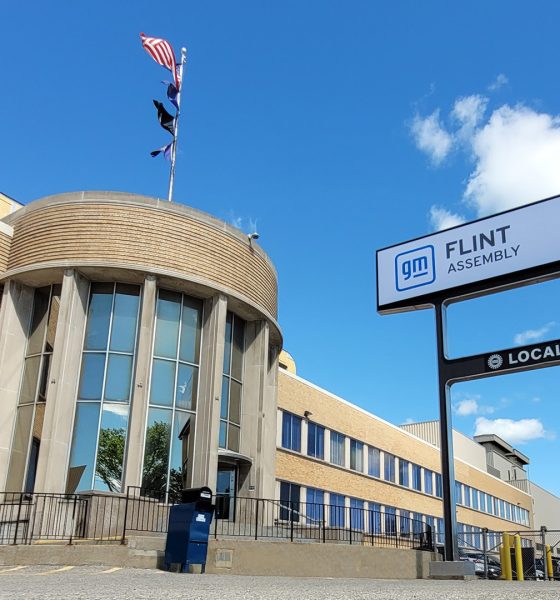As the United Auto Workers (UAW) union continues attempts to ratify new contract agreements with Big Three automakers General Motors (GM), Ford and Stellantis, one GM plant in Michigan has narrowly voted against the recently proposed deal following a historic six-week strike.
GM secured a tentative deal with the UAW late last month after Ford and Stellantis had come to tentative agreements within the prior week. The strike-ending agreements followed the initial walkouts against all three automakers on September 14 after previous union contracts expired and multiple waves of strike escalations in the weeks in between.
Since coming to the tentative agreements, the UAW is going to local chapters to explain the deals and have them ratified by workers through a vote. On Thursday, UAW Local 598 workers at GM’s Flint, Michigan assembly plant said they narrowly voted against adopting the contract, with 51.8 percent of votes cast going against the proposal, according to Reuters.
GM’s Flint assembly plant has 4,746 employees, and the factory produces the Chevy Silverado truck. GM did not comment on the process of ratification.
While GM is scheduled to continue holding votes on the contracts with additional local chapters, the news highlights the fact that the contracts are not yet a done deal — even following the costly strikes and lengthy negotiation period.
Workers at major GM plants including its Arlington, Texas assembly plant and its Fort Wayne, Indiana truck factory will vote in the weeks ahead. According to one UAW vote tracker, roughly 58 percent of GM workers across facilities who have cast votes so far have voted in favor of ratifying the contract.
UAW’s efforts to unionize Tesla ‘absolutely’ supported by President Joe Biden
The proposed UAW agreement would cover around 46,000 GM workers, including 25 percent in base wage increases through the contract’s April 2028 deadline, along with the automaker gradually increasing the top wage by as much as 33 percent. In addition, the proposal includes cost-of-living adjustments (COLA) that boost total worker pay to more than $42 per hour.
Despite the rejection of the contract at the Flint facility, some say GM is unlikely to offer much more than what it has already offered. University of Michigan professor Erik Gordon thinks chances are low for GM to go much higher.
“The chances of GM putting more than another 15 cents on the table are low,” Gordon said.
GM’s tentative contract includes almost $2 billion in investments going toward electric vehicle (EV) development at plants in Michigan, Kansas and New York. Late last month, GM also announced the delay of a key EV plant in Tennessee, and the company has separately announced plans to slow some other EV investments.
A major sticking point during early rounds of negotiations with the Big Three included adding coverage to future EV battery and auto plants, though the automakers eventually gave in.
The news also follows a nightmarish month for GM, even beyond the strikes.
GM’s self-driving subsidiary Cruise had a driverless vehicle drag and pin a woman in San Francisco in early October, for which the company’s driverless permit from the California Department of Motor Vehicles (DMV) was immediately revoked. It has since been reported that GM will halt production of Cruise’s self-driving Origin van, and the company is currently reviewing its response process following the accident.
Watch below to see UAW President Shawn Fain’s Wednesday ratification update.
What are your thoughts? Let me know at zach@teslarati.com, find me on X at @zacharyvisconti, or send your tips to us at tips@teslarati.com.

News
Tesla FSD fleet is nearing 7 billion total miles, including 2.5 billion city miles
As can be seen on Tesla’s official FSD webpage, vehicles equipped with the system have now navigated over 6.99 billion miles.

Tesla’s Full Self-Driving (Supervised) fleet is closing in on almost 7 billion total miles driven, as per data posted by the company on its official FSD webpage.
These figures hint at the massive scale of data fueling Tesla’s rapid FSD improvements, which have been quite notable as of late.
FSD mileage milestones
As can be seen on Tesla’s official FSD webpage, vehicles equipped with the system have now navigated over 6.99 billion miles. Tesla owner and avid FSD tester Whole Mars Catalog also shared a screenshot indicating that from the nearly 7 billion miles traveled by the FSD fleet, more than 2.5 billion miles were driven inside cities.
City miles are particularly valuable for complex urban scenarios like unprotected turns, pedestrian interactions, and traffic lights. This is also the difference-maker for FSD, as only complex solutions, such as Waymo’s self-driving taxis, operate similarly on inner-city streets. And even then, incidents such as the San Francisco blackouts have proven challenging for sensor-rich vehicles like Waymos.
Tesla’s data edge
Tesla has a number of advantages in the autonomous vehicle sector, one of which is the size of its fleet and the number of vehicles training FSD on real-world roads. Tesla’s nearly 7 billion FSD miles then allow the company to roll out updates that make its vehicles behave like they are being driven by experienced drivers, even if they are operating on their own.
So notable are Tesla’s improvements to FSD that NVIDIA Director of Robotics Jim Fan, after experiencing FSD v14, noted that the system is the first AI that passes what he described as a “Physical Turing Test.”
“Despite knowing exactly how robot learning works, I still find it magical watching the steering wheel turn by itself. First it feels surreal, next it becomes routine. Then, like the smartphone, taking it away actively hurts. This is how humanity gets rewired and glued to god-like technologies,” Fan wrote in a post on X.
News
Tesla starts showing how FSD will change lives in Europe
Local officials tested the system on narrow country roads and were impressed by FSD’s smooth, human-like driving, with some calling the service a game-changer for everyday life in areas that are far from urban centers.

Tesla has launched Europe’s first public shuttle service using Full Self-Driving (Supervised) in the rural Eifelkreis Bitburg-Prüm region of Germany, demonstrating how the technology can restore independence and mobility for people who struggle with limited transport options.
Local officials tested the system on narrow country roads and were impressed by FSD’s smooth, human-like driving, with some calling the service a game-changer for everyday life in areas that are far from urban centers.
Officials see real impact on rural residents
Arzfeld Mayor Johannes Kuhl and District Administrator Andreas Kruppert personally tested the Tesla shuttle service. This allowed them to see just how well FSD navigated winding lanes and rural roads confidently. Kruppert said, “Autonomous driving sounds like science fiction to many, but we simply see here that it works totally well in rural regions too.” Kuhl, for his part, also noted that FSD “feels like a very experienced driver.”
The pilot complements the area’s “Citizen Bus” program, which provides on-demand rides for elderly residents who can no longer drive themselves. Tesla Europe shared a video of a demonstration of the service, highlighting how FSD gives people their freedom back, even in places where public transport is not as prevalent.
What the Ministry for Economic Affairs and Transport says
Rhineland-Palatinate’s Minister Daniela Schmitt supported the project, praising the collaboration that made this “first of its kind in Europe” possible. As per the ministry, the rural rollout for the service shows FSD’s potential beyond major cities, and it delivers tangible benefits like grocery runs, doctor visits, and social connections for isolated residents.
“Reliable and flexible mobility is especially vital in rural areas. With the launch of a shuttle service using self-driving vehicles (FSD supervised) by Tesla in the Eifelkreis Bitburg-Prüm, an innovative pilot project is now getting underway that complements local community bus services. It is the first project of its kind in Europe.
“The result is a real gain for rural mobility: greater accessibility, more flexibility and tangible benefits for everyday life. A strong signal for innovation, cooperation and future-oriented mobility beyond urban centers,” the ministry wrote in a LinkedIn post.
News
Tesla China quietly posts Robotaxi-related job listing
Tesla China is currently seeking a Low Voltage Electrical Engineer to work on circuit board design for the company’s autonomous vehicles.

Tesla has posted a new job listing in Shanghai explicitly tied to its Robotaxi program, fueling speculation that the company is preparing to launch its dedicated autonomous ride-hailing service in China.
As noted in the listing, Tesla China is currently seeking a Low Voltage Electrical Engineer to work on circuit board design for the company’s autonomous vehicles.
Robotaxi-specific role
The listing, which was shared on social media platform X by industry watcher @tslaming, suggested that Tesla China is looking to fill the role urgently. The job listing itself specifically mentions that the person hired for the role will be working on the Low Voltage Hardware team, which would design the circuit boards that would serve as the nervous system of the Robotaxi.
Key tasks for the role, as indicated in the job listing, include collaboration with PCB layout, firmware, mechanical, program management, and validation teams, among other responsibilities. The role is based in Shanghai.
China Robotaxi launch
China represents a massive potential market for robotaxis, with its dense urban centers and supportive policies in select cities. Tesla has limited permission to roll out FSD in the country, though despite this, its vehicles have been hailed as among the best in the market when it comes to autonomous features. So far, at least, it appears that China supports Tesla’s FSD and Robotaxi rollout.
This was hinted at in November, when Tesla brought the Cybercab to the 8th China International Import Expo (CIIE) in Shanghai, marking the first time that the autonomous two-seater was brought to the Asia-Pacific region. The vehicle, despite not having a release date in China, received a significant amount of interest among the event’s attendees.










